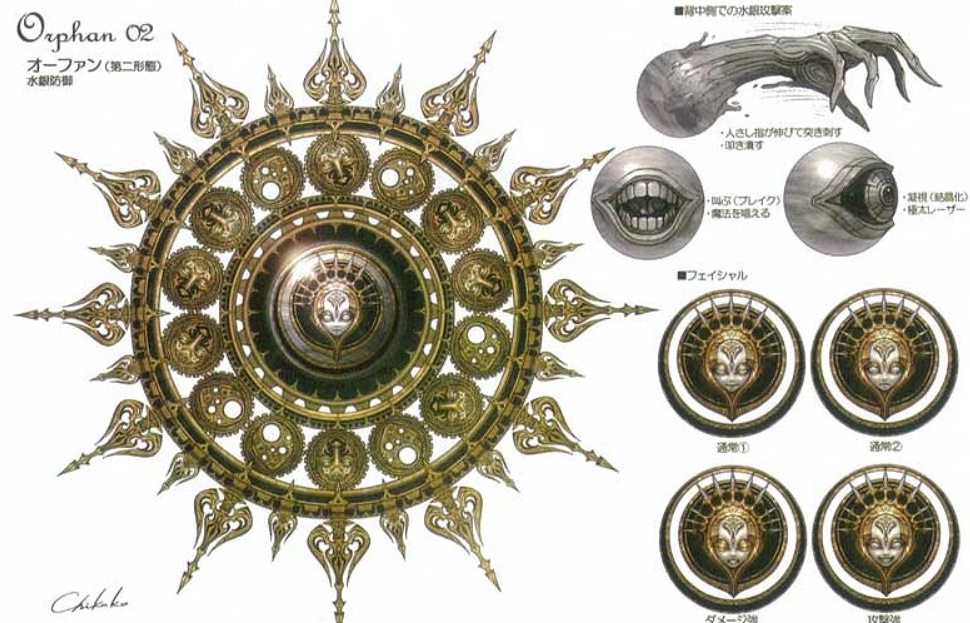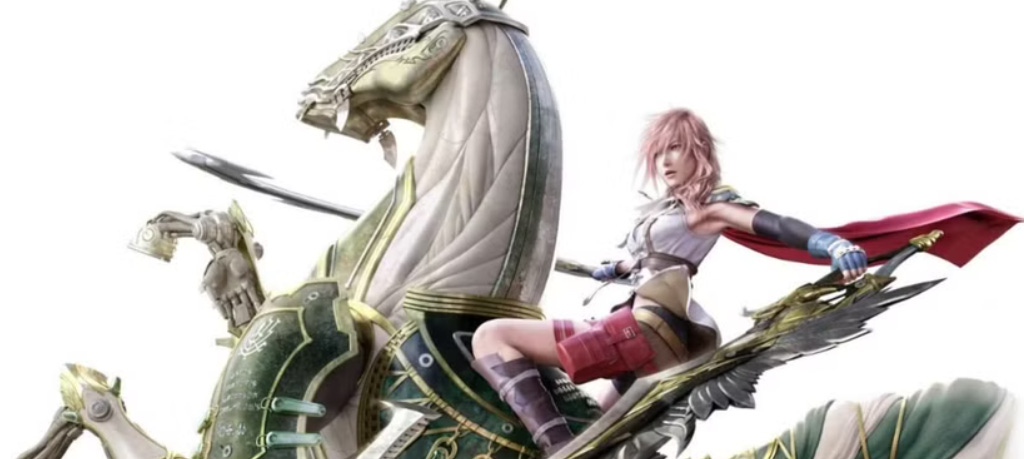The Mechanical Gods of Final Fantasy XIII
Episode 11 - Mythology with a mechanical twist
Greetings,
This topic may be of some interest even to those unfamiliar with this series, or those of you completely disinterested in videogames. Final Fantasy is a series that has been dear to my heart for many years. I absolutely love the intricate creativity and design work that goes into bringing these worlds to life.
Maybe you’re a fan or maybe you’ve never heard of it before. Either way, I wanted to bring to your attention an element of the 13th title, released in 2009 by Japanese studio Square Enix.
Final Fantasy 13
Final Fantasy has always dealt with themes of faith/religion alongside its fantastical and sci-fi elements. FF13 is no different, featuring a superbly creative world that mixes religious themes with sci-fi. This stuff is like music to my ears.
The story is set in a world called ‘Cocoon’ - a sort of giant sphere where people live under the rule of strange, mechanical Gods called ‘Fal’cie’ - the name already implies something ‘false’.
The gist of it, as briefly as I can put it, is that these Gods confer their powers to a select group of humans who then become ‘L’cie’ (basically demigods) and are given a mission to fulfil. If they don’t complete their mission they become zombies, but if they do complete it they turn into crystal, cursed to lay dormant for centuries. This is exactly what happens to the main cast of characters, who are then driven to battle against their fate and find another way to survive.
Essentially, these heroes are dragged into a conflict beyond their understanding or power, stuck between a rock and a hard place, and forced to fight against the gods, the people, and a variety of (extremely well designed) creatures and machines.
The Mecha-Mythology
These Fal’cie are what really fascinate me. Some of these Gods are basically computer-like systems designed to keep Cocoon alive by producing food and energy for its inhabitants. Others are more individual entities with their own schemes and plots, while others act just like wild beasts.
There’s more detail here but I won’t complicate matters too much.
The way they look reminds me of some kind of transformers. Their design mixes elements of religious iconography with technology. Like this:
Others incorporate more human-like elements and one has ‘scriptures’ carved into the armour plates of its design. This kind of stuff just gets me incredibly excited. It’s powerful design work.
Lore-wise, it is revealed that they had been concocting some grand plan. They were also created in turn by a greater God they call ‘The Maker’, who left them behind and vanished somewhere. In order to bring him back, these Gods decide to use the humans of Cocoon as a great ritualistic sacrifice to summon back their creator. As you may imagine, the heroes of this story aren’t quite pleased with this idea, and so they try to stop them.
In worshipping polytheistic deities, sacrifice is often a custom. But here, it is the gods who sacrifice people in trying to connect with their own god. I mean, it’s a really interesting idea.
Frankly, it’s not been executed very well within the actual game and, alongside some really boring gameplay system, it’s not exactly an experience I can recommend. Regardless, I wanted to take the time to extract the great ideas the writers had and bring them to you.
In their fight against these false gods, the heroes use a variety of spells and techniques, but also the help of other, lesser types of gods called ‘Eidolons’. These are also some really incredible works of creativity. They have two shapes: a humanoid and a machine one. They can change form depending on the situation. One turns into a horse, one into a motorcycle, another into a car, and the one below turns into a… something that shoots?
I have no idea what that is, but the texture work and techno-elements on display are some of the most intricate I’ve seen. Their names also reference Norse and Greek Mythology. Below is Odin, a horse-shaped machine warrior:
Shapes, colours and textures come together to offer a spectacle of design. Truly inspiring stuff. It’s quite a shame that the final product fails in some ways and, outside the dedicated fan base, most people will never glimpse these wonderful works of art.
Musical Spotlight
In keeping with Final Fantasy, this series also has some really incredible musical compositions, some that have luckily reached a wider audience, since the mastermind behind this music, Nobuo Uematsu, also tours the world to perform. Interestingly, the man is a self-taught musician and has been delivering ‘banging tunes’ as they say, since 1987.
One of his most famous compositions is probably ‘To Zanarkand’, the main theme of Final Fantasy 10 (which is also an incredible world to explore, filled with its own mythology, gods and themes of faith, religion, love and destiny).
This beautiful piano piece from 2001 has become world-famous and it deserves appreciation. According to his wikipedia however, his work on this title was plagued by a period of dissatisfaction and lack of inspiration. Somehow, despite this, here we have one of the most legendary compositions ever produced in videogame history:
Conclusion
I hope you’ve been feeling well.
As always, if there’s any recommendations, suggestions or questions about spirituality or mythology, as well as my work in general, feel free to check out the Chat.
More to come.
Blessings,










